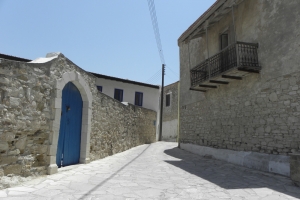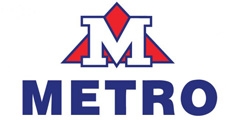MARONI
The village of Maroni is found built about 35 kilometers southwest of Larnaca. It has an average altitude of 70 meters, the altitude reaching 200 meters in the north of the village, and has a distance of 2 kilometers from the sea.
The village receives an average annual rainfall of about 380 millimeters; citrus fruits (lemons, grapefruits, oranges), cereals, forage plants, olive and locust trees, and various types of vegetables are cultivated in the region. Several greenhouses have been installed in the area for the cultivation of early vegetables. Stockbreeding in the village is limited. There are four units of sheep and goat breeding, two poultry farms, a hatchery, and an ultramodern pigsty.
Maroni is included in the irrigation project of Basilico-Pentaschino and has benefited from it with the irrigation of considerable range of land. Plans for re-allotment of the land have been applied in regions covered by the irrigation project. As far as transportation is concerned, the village is connected to Zygi in the southwest, to Psematismenos in the northwest and from there to the Limassol-Nicosia highway.
Maroni has undergone great fluctuations of its population. In 1881 the inhabitants of the village were 303, which increased to 329 in 1891, to 395 in 1901, to 430 in 1911, to 453 in 1921, and to 483 in 1931. In 1946 the inhabitants of the village numbered 576 of which 434 were Greek-Cypriots and 142 were Turkish-Cypriots. In 1960 the inhabitants were reduced to 526 (423 Greek-Cypriots and 103 Turkish-Cypriots). After 1964, because of the inter-communal unrest that followed the Turkish-Cypriot mutiny, the Turkish-Cypriot inhabitants of Maroni abandoned the village and moved to neighboring -also mixed population -villages. In 1973 the inhabitants of Maroni, all of them Greek-Cypriots, were 322, which increased to 348 in 1976 to be reduced to 336 in 1982. In the 2001 census the inhabitants of the village were 530.
The village preserves -to a great extend -its traditional architecture with the narrow streets, the stone-made houses with local stone, the houses with the picturesque upper levels with balconies, the arches and the front doors with chiseled frames. In the context of preserving this heritage, a large part of the old village has been deemed as a landmark and many houses have been renovated in the same style.
Maroni existed since the Medieval times. In old maps it is found marked as Marova. According to De Masse Latri, the village was a feud that belonged to Royal estates during the period of Frank domination. However he erroneously places it in the region of Kythrea.
Several interpretations have been suggested about the name of the village. One reports that it comes from a mythical character that is mentioned in Odyssey and lived in Thraca, Maronas, who was host to Ulysses. Another mentions that it maintains the name Maronia from the ancient city of Thraca and another interpretation reports that it took its name due to Maronites probably living in the region.
According to the Encyclopaedia of Cyprus, it is believed that these opinions are not valid and that the village was named after the Saint and martyr Maronas (the memory of which the church celebrates on the 18th of July), who also gave his name to the village Maronas of the Pafos district.
There is no relation with the community of the Maronites of Lebanon, although Maronites settled -also -in Cyprus early on. However, there is no testimony for their existence in the area of the village.
The region is rich in antiquities and has been confirmed that it was inhabited since the prehistoric times, indeed quite densely, something due to the fertile land in the valley of the river Maroni. It is also mentioned that in the region, starting from the village and toward the sea, there were remains of the Neolithic era, the Chalcolithic, the Early and Middle Bronze Age, the Archaic era, and the Roman and Medieval times.

















